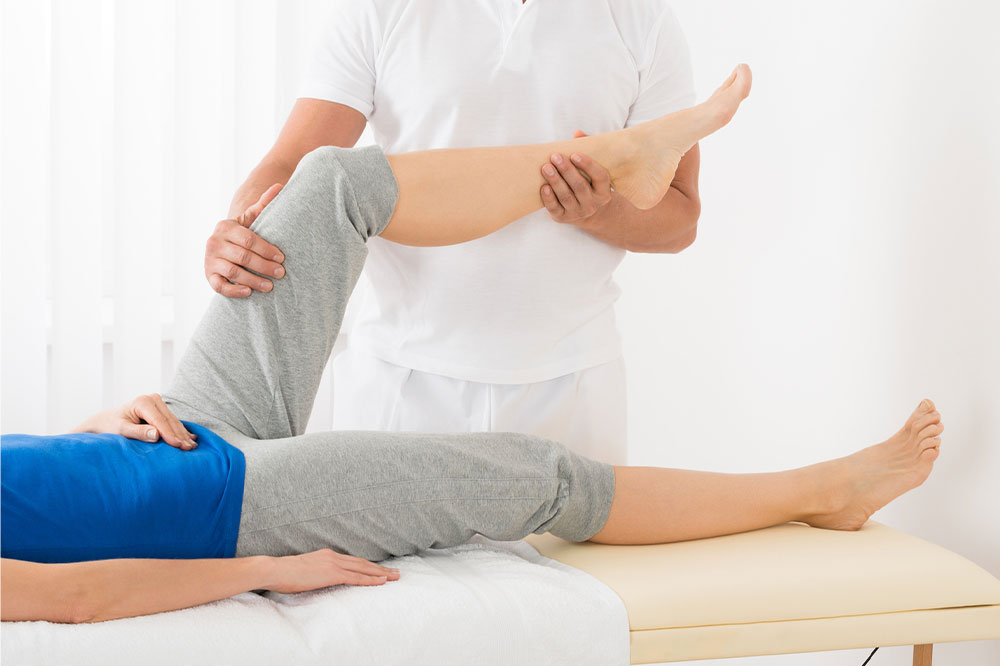
Muscle strain – Causes, symptoms, and tips to heal
A muscle pull, or muscle strain as it is commonly known, occurs when a muscle is overstretched or torn. The problem results from overuse or misuse of a muscle, generally during strenuous activity. While any muscle can get pulled or strained, those in specific regions like the shoulder, neck, lower back, and hamstring are more vulnerable. Here are the reasons behind the ailment, its symptoms to watch for, and some tips to heal pulled muscles.
Causes and risk factors
A muscle pull could occur for several reasons, such as inflexibility, slipping, or losing one’s footing or balance on the floor. The risk is higher during strenuous workouts, especially if a person maintains a poor posture or does not begin with warm-up exercises.
Individuals who play a sport may experience chronic muscle pull or strain because of moving the same group of muscles regularly. It could be any sport, including rowing, golf, tennis, and baseball. Since these games require repetitive movements, one may keep injuring the same muscle again and again.
Signs and symptoms
Identifying a muscle pull is easy, as the affected area starts causing pain. But individuals should also look out for the following symptoms:
Swelling
Stiffness
Bruising or discoloration
Soreness
Limited range of motion
Weakness
Muscle spasms
Knotted-up feeling
These discomforts usually persist for a couple of days and improve with simple home remedies and rest. However, if none of the DIY treatments work and the symptoms stay on for long (more than a week to ten days), one should consult a doctor for standardized diagnosis and treatment.
Diagnosis
While mild to moderate symptoms with bearable pain usually subside in a couple of days, those experiencing worsening symptoms should visit a healthcare expert for diagnosis. For instance, an individual may want to see an expert if they cannot walk properly or move their arms and legs, the pain has not subsided in a week, the injured area is numb, or blood is leaking out of the injury. In such cases, the doctor may perform a physical examination.
The doctor may check for swelling and tenderness around the affected muscle during the physical examination. The patient is asked to help the professional identify the areas where they can feel pain, numbness, or any unusual feeling. Once the location of the injury has been spotted, the doctor will check its intensity and nature. This will help determine the right treatment procedures and develop a recovery plan.
Usually, if the muscle or the tendon has been torn, the doctor identifies it by touch and suggests remedies accordingly. But they sometimes recommend an ultrasound to check the soft tissue and ensure no other serious problem persists.
Treatments for recovery
In most cases, muscle pulls or strains can be treated at home using simple DIY remedies. Here are a few easy tips and procedures to try:
Rest
As easy as it may seem, rest is necessary and should not be ignored. Patients should rest for two days straight after the injury and then move the affected body part gently to prevent the muscles from becoming stiff. It is crucial to avoid a long break and reintroduce movement slowly and steadily so that the healing process continues. A physiotherapist can help patients identify the right movements based on the nature of their injury. Sadly, many patients think rest will set them back in their routine, but that is far from the truth. Adequate rest can help the body recover from physical fatigue and return stronger. While exercising, too, one should schedule a recovery period between two workouts to help the muscles heal and regain strength.
Ice pack
Applying an ice pack to the muscle right after injury is a must to control swelling. One should not place ice cubes directly on the skin but wrap them in a towel or cloth and then apply them on the muscle. Individuals should apply ice for 20 minutes every two to three hours on the first day. Post that, patients can decrease the frequency to once every couple of hours.
Compression
Wrapping the affected area in an elastic bandage can prevent the swelling from worsening. However, it should not be wrapped too tightly as it can stop the blood from flowing freely.
Elevation
Experts advise elevating the injured area above the level of the heart, as it improves blood flow and controls the swelling. For example, one can elevate their leg by keeping it on a chair. This remedy is advised only for the first two days.




